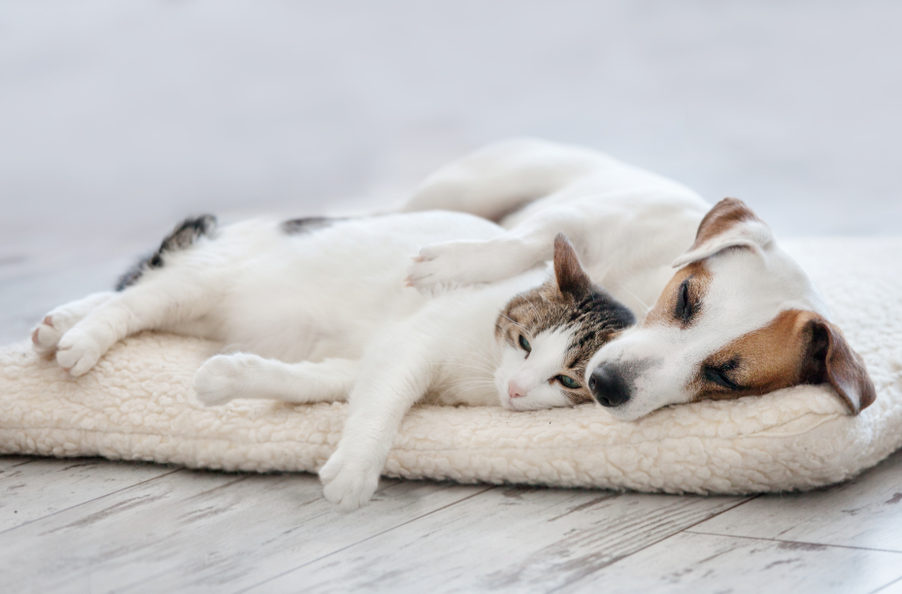Reducing some common disturbances and adjusting your routine might be all that’s needed to help your pet get adequate sleep.
The struggle to get enough sleep is not limited to humans. Your dog or cat can suffer from sleep deprivation just like you. Their symptoms aren’t that much different either. Daytime drowsiness, lack of energy, and irritability are signs that both of you might not be getting enough shuteye. However, there are steps you can take to help your pet get the rest he needs.
The amount of sleep your pet needs depends on a number of factors. First and foremost is species. The average dog needs 14 hours of sleep, but depending on size, age, and activity level, he could need as much as 18 to 20 hours. Cats, on the other hand, typically nap 15 to 20 hours a day. Again, their sleep needs will depend on age, activity level, and size.
Boost activity level
A sedentary lifestyle doesn’t lend itself to high-quality slumber. Exercise helps keep your pet’s mind and body sharp. But more importantly, it wears him out so he’s tired enough for more naps and/or a prolonged sleep period at night.
Try adding an extra walk or game of fetch to your dog’s daily routine. Cats may not be as receptive to a leash and collar, but you can provide plenty of toys and engage in playtime to increase your cat’s activity level. As you help your pet, you may find that you’re getting extra exercise too.
Buy him his own bed
According to a 2010 survey, over 50 percent of dog owners and 60 percent of cat owners sleep with their pet. Sleeping with a pet has its psychological advantages for both parties. However, when it comes to the actual measurement of hours slept, bed sharing definitely causes more sleep disturbances and less overall sleep for everyone involved.
Animals dream and move in their sleep like you do. Even a high-quality mattress that reduces motion transferal can’t prevent two bodies from bumping into one another. You both create a sleep hazard that can be solved by moving to separate sleep spaces.
A designated space like a dog bed or cat hammock gives your pet a comfortable place to sleep where he won’t run into anybody else. Of course, you’ll both get better sleep if you’re in separate rooms, too. However, it can be distressing for some animals and pet owners to be separated all night long. If that’s the case for you, a designated sleep space within your room, but not in your bed, might be the perfect answer.
Create a designated daytime sleep space
The sleep cycles of dogs and cats work differently than humans. We generally sleep for a single extended period that ranges from seven to nine hours. Dogs do sleep for an extended time at night but typically use short naps throughout the day to get all the rest they need. Cats, on the other hand, doze mostly in the day and are active at night.
Because everyone in the family isn’t running on the same schedule, your pet needs a designated daytime space where he’ll be relatively undisturbed. A safe, comfortable area with a bed or pillow that’s out of the way is the perfect retreat for those daytime naps.
Conclusion
Pets have many of the same sleep needs as their owners. Remember, your pet isn’t being lazy when he naps – he’s getting the rest he needs to maintain his physical and emotional health. A few simple changes to your routine can boost your pet’s energy and help everyone – you included – get much needed rest.








